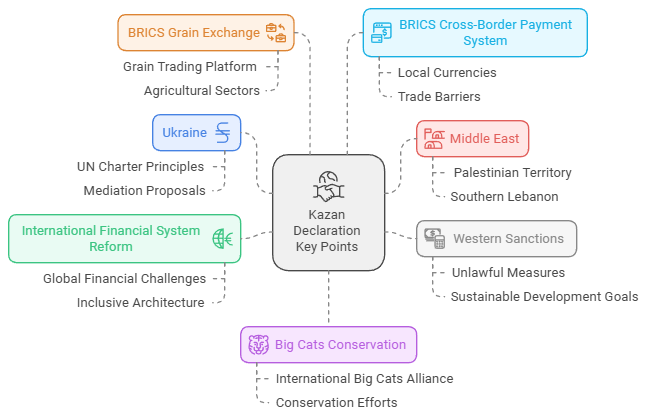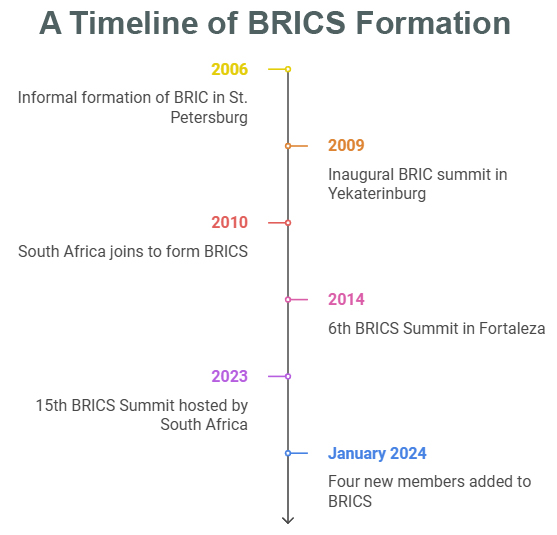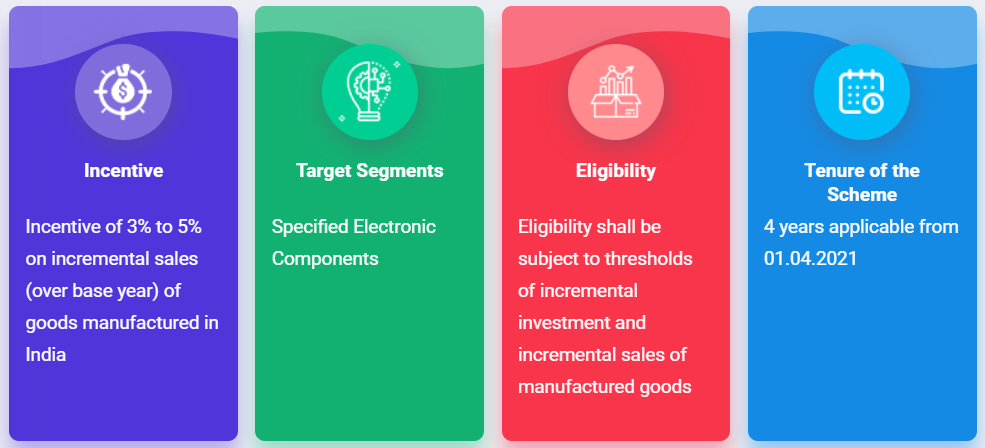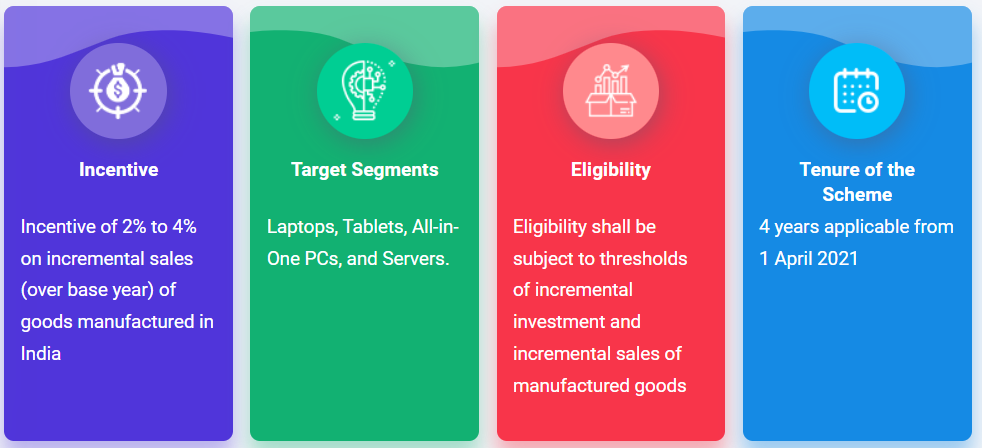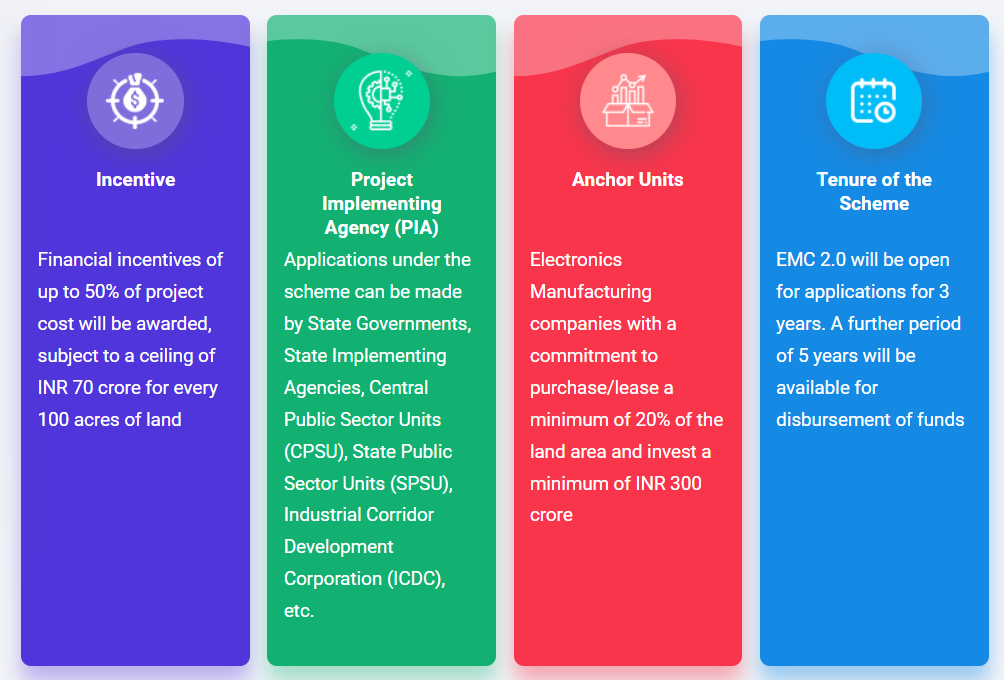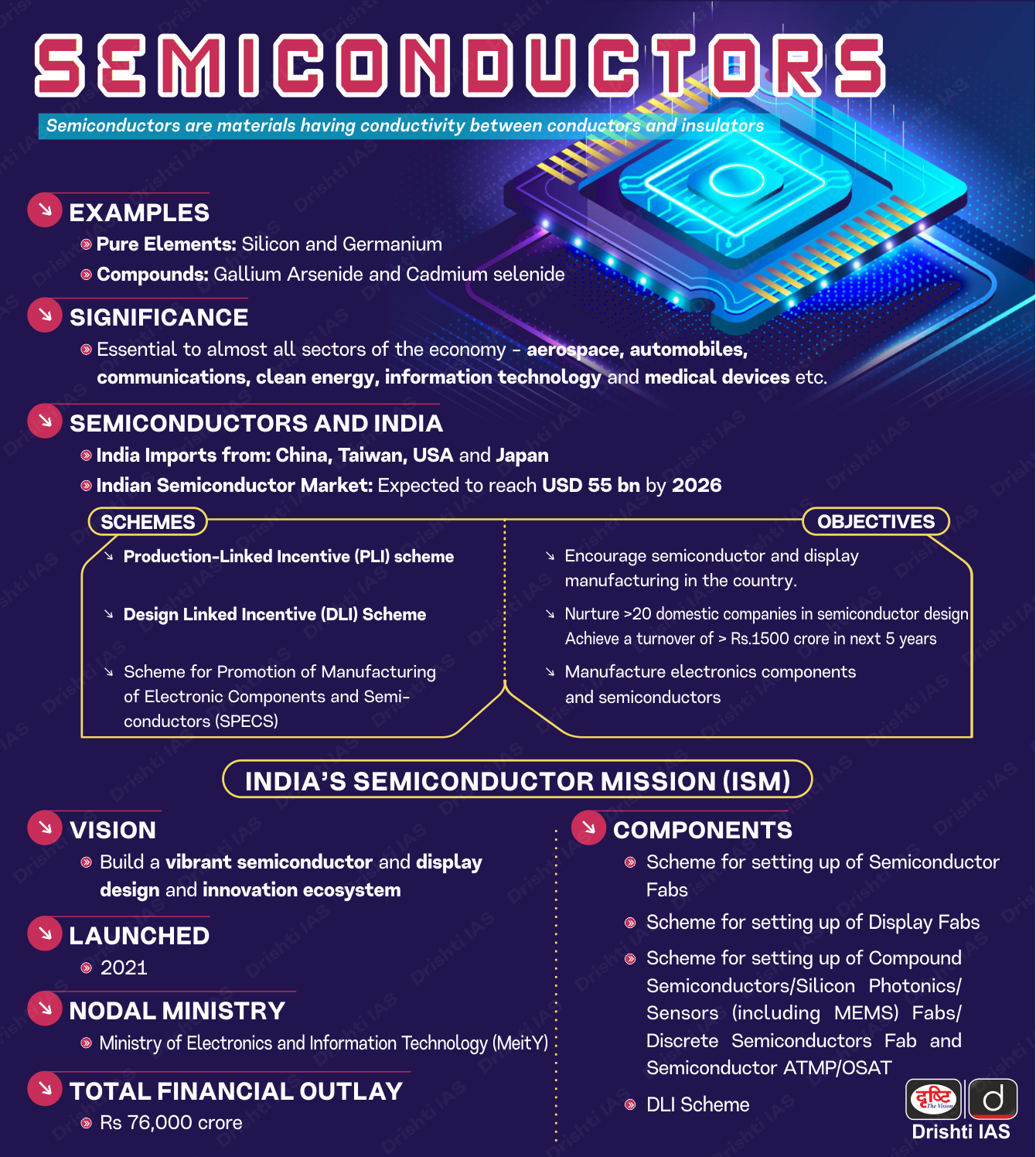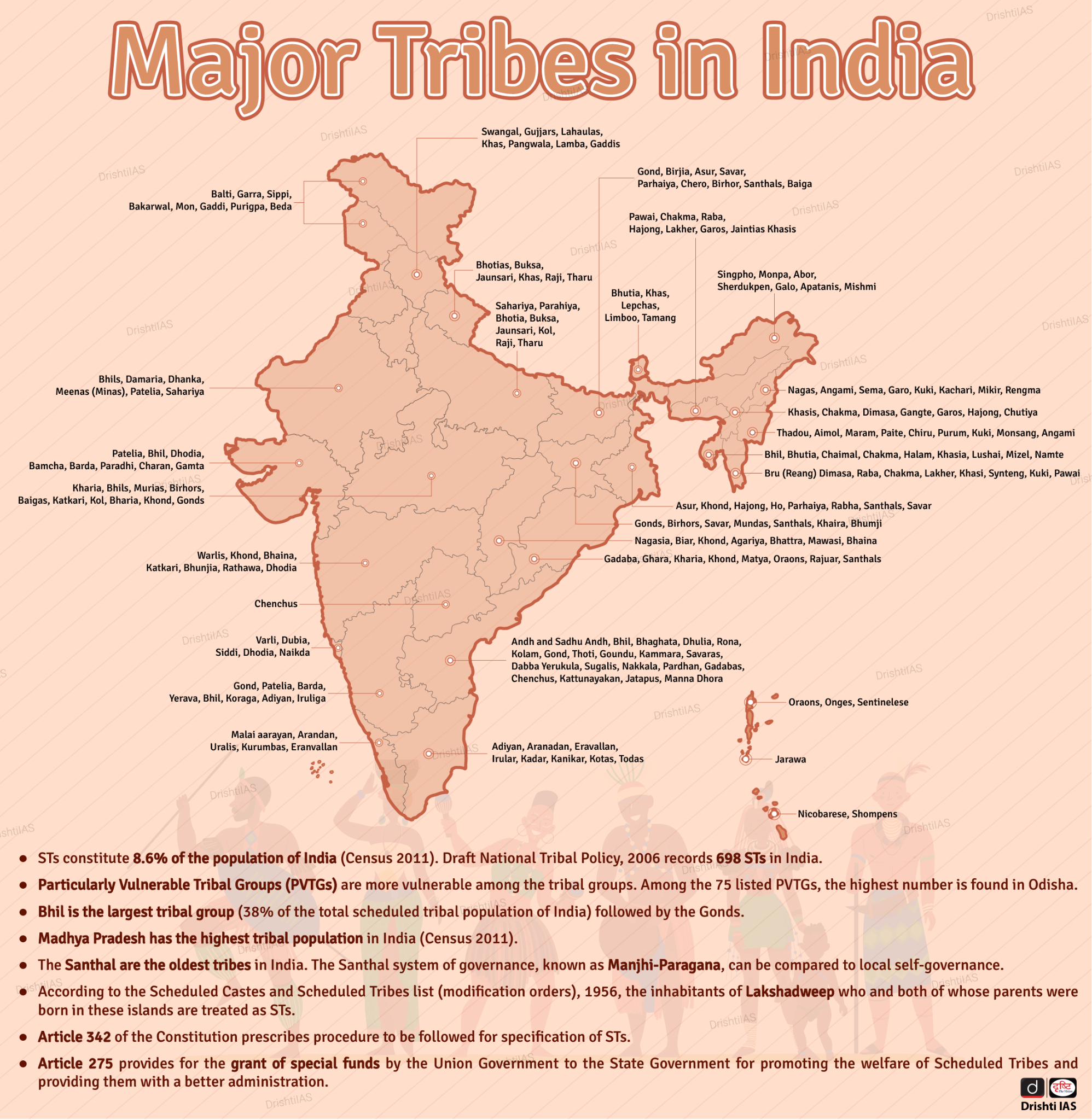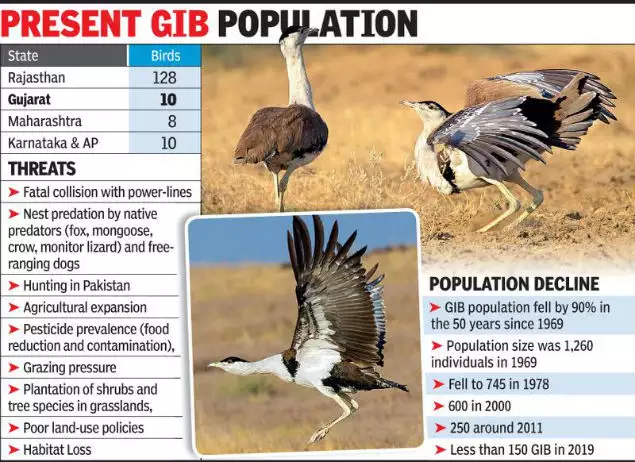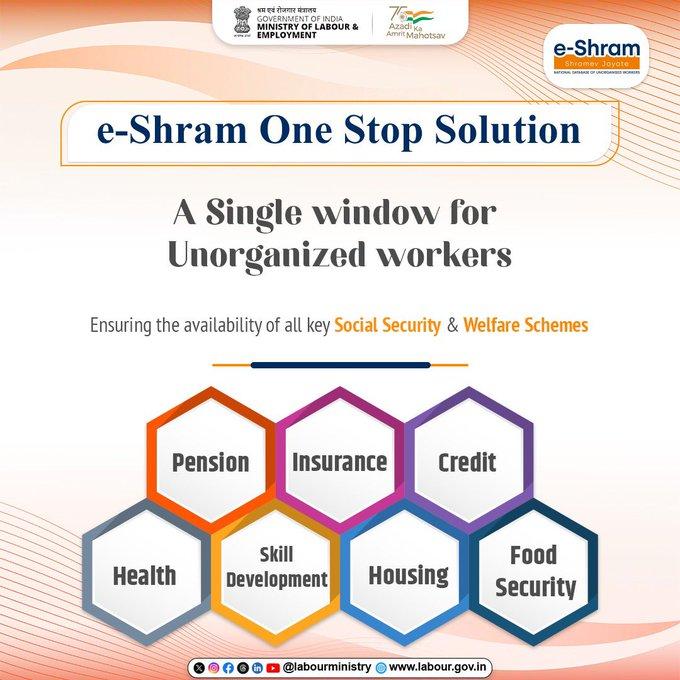16th BRICS Summit & India-China Border Agreement
For Prelims: 16th BRICS Summit, India’s Unified Payments Interface (UPI), Line of Actual Control (LAC), Depsang Plains and Charding Nullah, New Development Bank (NDB)
For Mains: BRICS: Challenges & Way Forward, India-China Border Agreement
Why in News?
Recently, the 16th BRICS Summit was held in Kazan, Russia.
- On the sidelines of the Summit, the PM welcomed the recent agreement with China for "complete disengagement and resolution" of 2020 border issues, marking their first bilateral meeting since 2020.
Note:
- In January, 2024, the alliance added four new members – Egypt, Ethiopia, Iran and the UAE.
- Saudi Arabia is yet to formalise its BRICS membership, however its foreign minister attended the summit.
What are the Key Highlights of the Summit?
- New Members Participation:
- The summit showcased the participation of new member countries, underscoring the increasing influence and diversity within the BRICS+ alliance.
- Focus on Multilateralism:
- Leaders engaged in discussions about strengthening multilateralism, countering terrorism, fostering economic growth, pursuing sustainable development, and addressing the concerns of the Global South.
- Kazan Declaration:
- Stand on Geopolitical Conflicts:
- On Ukraine: Emphasised mediating a peaceful resolution through dialogue and diplomacy.
- On West Asia Crisis: Expressed deep concern over the escalating humanitarian crisis in Gaza Strip and West Bank.
- Condemned the loss of civilian lives and infrastructure damage from Israeli attacks in Southern Lebanon.
- On Western Sanctions: Emphasised the disruptive effects of unlawful unilateral coercive measures, including illegal sanctions, on the global economy, international trade, and the achievement of SDGs.
- On BRICS Grain Exchange: Explored the establishment of a grain trading platform within BRICS, known as the BRICS Grain Exchange, with plans for future development that may include other agricultural sectors.
- Financial Integration Support: The summit emphasised the need for greater financial integration among member countries. Key Aspects Highlighted:
- Importance of trade in local currencies.
- Facilitating smooth cross-border payments
- India’s UPI was highlighted as a successful model.
- BRICS-led payment system to rival SWIFT
- On Big Cats: Supported the efforts of member countries to preserve rare species, particularly big cats, and notes India's initiative to create an International Big Cats Alliance.
- BRICS countries are encouraged to collaborate further on conservation efforts for these vulnerable species.
- Stand on Geopolitical Conflicts:
What are the Key Highlights of India-China Bilateral Meeting?
- About:
- The meeting followed significant incidents in 2020 which deteriorated relations between the two countries and aimed to revive bilateral relations.
- India-China Border Agreement:
- The importance of the agreement is highlighted by China's previous unwillingness to discuss the Depsang Plains and Charding Nullah while negotiating disengagement at other points.
- Both nations have consented to allow troops to patrol up to the old Patrolling Points (PPs) along the LAC in the Depsang Plains and Demchok.
What is BRICS?
- About: First informally formed during a meeting of the leaders of Brazil, Russia, India, and China (BRIC) on the sidelines of the G8 (now G7) Outreach Summit in 2006, BRICS represents the grouping of the world’s leading emerging economies.
- In 2010, South Africa joined the grouping to form what is known as BRICS.
- It now includes 9 countries - Brazil, China, Egypt, Ethiopia, India, Iran, Russian Federation, South Africa and UAE.
- The inaugural BRIC summit was held in Yekaterinburg, Russia, in 2009.
- During the 6th BRICS Summit in Fortaleza (2014) the leaders signed the Agreement establishing the New Development Bank (NDB).
- In 2010, South Africa joined the grouping to form what is known as BRICS.
- Significance:
- As of August 2023, the BRICS contributes 40% of the world's population which controls 26% of the global GDP.
Why BRICS Matters?
- Engagement of Non-Western Countries with Russia: The Kazan Summit highlighted that non-Western nations acknowledge Russia's strategic significance and its role as a key supplier of weapons and energy.
- BRICS as a Cohesive Institution: Despite diverse membership, BRICS has demonstrated effective management as a cohesive institution. Critics argue that economic disparities hinder unity, with some economies vastly larger than others.
- However, BRICS has maintained collaboration through annual Summits and the establishment of institutions like the NDB, which has funded projects worth USD 30 billion since 2015. The Summit schedule has remained intact despite geopolitical tensions.
- Emergence as an Influential Bloc: BRICS has become an important group in global politics, causing concern in the West about its ability to compete with the G7 and influence the G20.
- Although it focuses mainly on economic issues, BRICS also addresses political matters, emphasising discrimination and inequality in international institutions. Its members believe they are underrepresented in major organisations like the UNSC, IMF, and World Bank, especially as Western influence decreases.
- The Kazan Declaration reflected BRICS's collective ambition to reform existing international frameworks, aiming for enhanced representation and influence on the global stage.
What are the Challenges Related to the BRICS?
- Countering the Dollar: Despite ambitions to dethrone the dollar and foster a multipolar financial system, BRICS faces significant hurdles. The NDB, established as an alternative to the World Bank, has made limited progress, with its lending far overshadowed by the World Bank's figures.
- Efforts to promote non-dollar currencies in international transactions have also been sluggish.
- Geopolitical Contradictions: The diversity of new members introduces complexities. The UAE and Egypt maintain alliances with the US, while Iran stands as a direct adversary. These contradictions could challenge BRICS in maintaining a unified agenda.
- Decision-Making Difficulties: The expansion of BRICS could complicate decision-making, as the group operates on a consensus basis. With more members, achieving consensus may become increasingly challenging, potentially leading to a situation similar to that of the Non-Aligned Movement (NAM) and the Group of 77 (G77), which, although still in existence, hold limited influence.
- Additionally, the organisation may reflect broader geopolitical rivalries among its members, particularly concerns that tensions in West Asia could hinder its functionality.
Way Forward
- Establish clear, shared objectives among member countries, focusing on cooperation in trade, technology, and security.
- Actively engage in initiatives that strengthen collaboration in supply chains, energy, food security, and financial resilience.
- Promote universal security by ensuring respect for all nations' security and fostering dialogue over confrontation.
|
Drishti Mains Question: How do the developments from the recent BRICS summit, particularly the India-China bilateral meeting, impact regional stability and international relations? |
UPSC Civil Services Examination, Previous Year Questions (PYQs)
Prelims
Q. Consider the following statements: (2016)
- New Development Bank has been set up by APEC.
- The headquarters of the New Development Bank is in Shanghai.
Which of the statements given above is/are correct?
(a) 1 only
(b) 2 only
(c) Both 1 and 2
(d) Neither 1 nor 2
Ans: (b)
Q. The ‘Fortaleza Declaration’, recently in the news, is related to the affairs of (2015)
(a) ASEAN
(b) BRICS
(c) OECD
(d) WTO
Ans: (b)
Q. With reference to a grouping of countries known as BRICS, consider the following statements: (2014)
- The First Summit of BRICS was held in Rio de Janeiro in 2009.
- South Africa was the last to join the BRICS grouping.
Which of the statements given above is/are correct?
(a) 1 only
(b) 2 only
(c) Both 1 and 2
(d) Neither 1 nor 2
Ans: (b)
Mains:
Q. Border management is a complex task due to difficult terrain and hostile relations with some countries. Elucidate the challenges and strategies for effective border management. (2016)
India’s Semiconductor Ambitions
For Prelims: DLI Scheme, Development of Semiconductors and Display Manufacturing Ecosystems in India, Semiconductor Fab, System on Chip (‘SoC), India Semiconductor Mission.
For Mains: Importance of Semiconductor Fabrication, India’s Semiconductor Industry, India Semiconductor Mission (ISM), Make in India and Aatma Nirbhar Bharat Abhiyan, Challenges and Way Forward
Why in News?
Recently, India's semiconductor ambitions advanced with the Union Cabinet approving an $11 billion chip fabrication plant in Gujarat, led by Tata Group and Taiwan’s Powerchip, boosting India's goal to become a key global semiconductor player.
What is the Current Status and What are the Opportunities in India’s Semiconductor Industry?
- Current Status:
- According to a recent report published in the Economic Times, India's semiconductor market was valued at $45 billion in 2023 and is projected to rapidly grow at a CAGR of 13 per cent to surpass $100 billion by 2030.
- Opportunities:
- Large Domestic Market: As the largest populous economy in the world, India possesses a vast domestic consumption market for semiconductors.
- India has emerged as the second-largest market for 5G smartphones after China in the first half of 2024, which is expected to grow further in future.
- Government Support and Incentives: Government has approved the Semicon India programme for the development of semiconductor and display manufacturing ecosystem in the country.
- Infrastructure Development: The establishment of semiconductor manufacturing units and assembly, testing, marking, and packaging facilities is creating a strong foundation for the industry.
- Strategic Partnerships: Collaborations with global semiconductor leaders and technology partnerships with countries like the US and Japan are enhancing India's capabilities and fostering technology transfers.
- Large Domestic Market: As the largest populous economy in the world, India possesses a vast domestic consumption market for semiconductors.
What are Some of the Initiatives taken by the Government to promote Semiconductor Industry?
- India Semiconductor Mission (ISM)
- About:
- The ISM was launched in 2021 with a total financial outlay of Rs76,000 crore under the aegis of the Ministry of Electronics and IT (MeitY).
- It is part of the comprehensive program for the development of sustainable semiconductor and display ecosystems in the country.
- The programme aims to provide financial support to companies investing in semiconductors, display manufacturing and design ecosystem.
- Envisioned to be led by global experts in the Semiconductor and Display industry, ISM will serve as the nodal agency for efficient, coherent and smooth implementation of the schemes.
- Four schemes have been introduced under the India Semiconductor Mission:
- ‘Modified Scheme for setting up of Semiconductor Fabs in India’:
- It offers 50% fiscal support for Silicon CMOS-based semiconductor fabs, aiming to attract large investments and strengthen the country’s electronics manufacturing ecosystem and value chain.
- ‘Modified Scheme for setting up of Display Fabs in India’:
- It offers 50% fiscal support to attract investments for manufacturing TFT LCD and AMOLED display panels, strengthening the country's electronics manufacturing ecosystem.
- 'Modified Scheme for setting up Compound Semiconductor and ATMP facilities in India':
- The 'Modified Scheme for setting up Compound Semiconductor and ATMP facilities in India' provides 50% fiscal support for capital expenditure on establishing Compound Semiconductor, Silicon Photonics, Sensors, and Discrete Semiconductor fabs.
- 'Semicon India Future Design: Design Linked Incentive Scheme':
- The 'Semicon India Future Design: Design Linked Incentive Scheme' offers financial support for semiconductor design, providing up to 50% incentives on expenses (₹15 crore limit) and 6%-4% on net sales turnover over five years (₹30 crore limit).
- ‘Modified Scheme for setting up of Semiconductor Fabs in India’:
- About:
- Scheme for Promotion of Manufacturing of Electronic Components and Semiconductors (SPECS): This scheme aims to enhance India's manufacturing ecosystem for electronic components and semiconductors. With a growing market that reached $20.8 billion in 2018-19 and is expected to hit $200 billion by 2025, India is well-positioned to become a global hub, supported by skilled labor, improved infrastructure, and government initiatives. The scheme will boost domestic demand, increase value addition, and create jobs in the sector.
- Production Linked Incentive Scheme (PLI) for Large Scale Electronics Manufacturing: The PLI for Large Scale Electronics Manufacturing proposes a financial incentive to boost domestic manufacturing and attract large investments in the electronics value chain including mobile phones, electronic components and ATMP units.
- Production Linked Incentive Scheme (PLI) for IT Hardware: The Production Linked Incentive Scheme for IT Hardware proposes a financial incentive to boost domestic manufacturing and attract large investments in the value chain. The scheme seeks to incentivise companies to utilise the existing installed capacity to fulfill the increasing domestic demand.
- Modified Electronics Manufacturing Clusters (EMC 2.0) Scheme: EMC 2.0 Scheme aims to enhance infrastructure for India's electronics industry, promoting supply chain efficiency and reducing logistics costs. It offers financial incentives for building quality infrastructure and common facilities for manufacturers.
What is the Strategic Importance of Semiconductor Fabrication?
- Economic Growth: Building a semiconductor industry can attract substantial investments, create high-value jobs, and drive economic growth, particularly in the electronics manufacturing sector.
- With the global semiconductor market projected to reach USD 1 trillion by 2030, India aims to achieve a 10% share in the global semiconductor market by 2030.
- Moreover, domestic semiconductor production is essential for a wide array of downstream industries, supporting economic resilience and strategic interests.
- Technological Sovereignty and Self-Reliance: Developing domestic semiconductor fabrication capabilities will reduce India's reliance on foreign suppliers, ensuring greater control over critical technologies and enhancing national security.
- This aligns with India's strategic goals to achieve technological self-reliance and supports initiatives like "Make in India" and "Aatma Nirbhar Bharat Abhiyan."
- Moreover, India imports about 65-70% of its electronic components, mainly from China. Establishing local manufacturing can mitigate this dependency.
- Elevating India’s Status Globally: As semiconductors are considered the "new oil" of the economy, India's emergence as a key player in this industry can elevate its global status and establish it as a hub for technology and electronics manufacturing.
- Fostering Technological Advancements: Investing in semiconductor fabrication encourages research and development, leading to technological advancements and fostering a culture of innovation within the country. This is essential for sustaining long-term growth and competitiveness.
- Embracing the Fourth Industrial Revolution: India is embracing the Fourth Industrial Revolution, also known as Industry 4.0, which heavily depends on semiconductors. The country has the potential to be a leader in emerging technologies such as artificial intelligence (AI), drones, and quantum computing.
- A strong semiconductor ecosystem will be crucial for facilitating advancements in these areas, driving innovation, and enhancing productivity across various sectors.
What are the Challenges faced by the Semiconductor Industry in India?
- Supply Chain and Infrastructural Bottlenecks: Semiconductor manufacturing faces challenges in establishing reliable supply chains for raw materials and building the necessary infrastructure, such as cleanrooms and fabs.
- Semiconductor fabrication is a highly intricate process, often involving between 500 and 1,500 steps, taking place in cleanrooms to avoid contamination. Developing this ecosystem requires significant investment and technological expertise.
- Capital-Intensive: Setting up semiconductor manufacturing plants requires substantial capital investment, alongside sustained R&D expenditure. The financial burden of these projects is often daunting for many companies.
- Beyond infrastructure, companies need to invest in advanced technology, talent, and equipment, further increasing the capital requirements for semiconductor production.
- Talent Gap: India faces a critical shortage of skilled professionals in chip design, fabrication, testing, and packaging, hindering its ability to scale semiconductor production.
- According to a report by TeamLease Degree Apprenticeship, the semiconductor industry in India is projected to encounter a shortage of 250,000-300,000 professionals by 2027.
- Global Competition and Market Dominance: The global semiconductor market is largely controlled by a few countries, with Taiwan and South Korea accounting for 80% of the global chip foundry base. India faces stiff competition from these established players, along with China and other semiconductor hubs.
- Nvidia’s Dominance in AI Chips: In the chip design market, companies like Nvidia dominate, especially in high-end graphics and AI chips, creating barriers for India to penetrate this segment. Similarly, ARM holds significant market share in designing architectures for processors.
- EUV Technology Monopoly: Advanced semiconductor manufacturing is heavily dependent on Extreme Ultraviolet Lithography (EUV) technology, produced solely by the Netherlands-based company ASML.
- The monopoly of this technology challenges India by restricting access to advanced chip-making equipment.
- Environmental Concerns: The semiconductor industry uses large quantities of hazardous chemicals, such as hydrochloric acid, toxic metals, and volatile solvents, which pose significant environmental risks.
- Managing these environmental concerns adds complexity and cost to semiconductor production.
What is the Way Forward for India’s Semiconductor Journey?
- Talent Development: Developing training programs in semiconductor design, fabrication, and testing aligned with industry demands is essential for creating a skilled talent pool in advanced technologies.
- In 2023, the government announced that over 300 leading institutions across India would start offering specialized semiconductor courses, marking a positive step in the right direction.
- Research and Development (R&D): To stay competitive in the global semiconductor market, India must significantly boost investments in R&D. This includes supporting indigenous product design and intellectual property (IP) development, which can empower smaller companies and startups to compete globally.
- Incentives and Policies: Continued government support through incentives and favorable policies will attract more investments. The India Semiconductor Mission (ISM) and state-level initiatives are steps in the right direction.
- Several states have introduced initiatives with favorable policies and incentives to support semiconductor manufacturing, such as UP's Semiconductor Policy 2024.
- These state-level efforts complement the ISM.
- Several states have introduced initiatives with favorable policies and incentives to support semiconductor manufacturing, such as UP's Semiconductor Policy 2024.
- Global Partnerships: India’s role in the global semiconductor industry can be strengthened through "chip diplomacy" — fostering international collaboration and joint ventures, helping India overcome capital expenditure barriers and accelerate its growth.
- Focus on Niche Technologies: India should focus on developing niche technologies like MEMS (Micro-Electro-Mechanical Systems) and sensors, which are becoming increasingly important for industries like IoT, automotive, and telecommunications.
- These technologies offer India the opportunity to lead in specialized areas within the global semiconductor market.
- Promoting Private Sector Participation: Private companies bring in agility, risk-taking ability, and access to global networks, which are crucial for rapid growth.
- The Tata Group in collaboration with Taiwan's Powerchip Semiconductor Manufacturing Corporation (PSMC) is building India's first semiconductor fabrication plant in Gujarat.
- More private sector initiatives must be promoted and incentivised.
- The Tata Group in collaboration with Taiwan's Powerchip Semiconductor Manufacturing Corporation (PSMC) is building India's first semiconductor fabrication plant in Gujarat.
- Seizing Opportunities Amid Tensions: The ongoing trade and geopolitical tensions between the US and China have reshaped the semiconductor landscape, creating openings for countries like India to strengthen their position in the industry through government-funded initiatives and strategic partnerships, such as the collaboration with Taiwan’s Powerchip.
Conclusion
India’s semiconductor production efforts, backed by ambitious projects like the Tata Group’s fabrication plant, mark a turning point in its technological capabilities. This move not only strengthens India’s economic and strategic imperatives but also positions the country as a potential key player in the global semiconductor landscape.
|
Drishti Mains Question: What is the significance of establishing a domestic semiconductor fabrication industry for India? Discuss the challenges faced by India's semiconductor industry, and suggest strategies to address them. |
UPSC Civil Services Examination, Previous Year Question (PYQ)
Prelims:
Q. Which one of the following laser types is used in a laser printer? (2008)
(a) Dye laser
(b) Gas laser
(c) Semiconductor laser
(d) Excimer laser
Ans: (c)
Q. With reference to solar power production in India, consider the following statements: (2018)
- India is the third largest in the world in the manufacture of silicon wafers used in photovoltaic units.
- The solar power tariffs are determined by the Solar Energy Corporation of India.
Which of the statements given above is/are correct?
(a) 1 only
(b) 2 only
(c) Both 1 and 2
(d) Neither 1 nor 2
Ans: (d)
World Economic Outlook Report
For Prelims: International Monetary Fund (IMF), World Economic Outlook (WEO), Pent-Up Demand, Headline Inflation, Global Slowdown, Reserve Bank of India (RBI), Monetary Policy Committee (MPC), Tight Monetary Policies In Advanced Economies, Global Headline Inflation
For Mains: Significance of India’s economic projections, inflation trends, and global growth dynamics in India’s economic growth.
Why in News?
Recently, the International Monetary Fund (IMF) released its World Economic Outlook (WEO) report for October 2024.
- In this, the IMF reaffirmed India's growth projections at 7% for FY2024 and 6.5% for FY2025.
World Economic Outlook
- Aboot: WEO is a key report produced by the International Monetary Fund and published biannually, in April and October.
- Focus: Provides analysis and projections for the global economy and individual countries.
- Purpose: Aims to assess economic developments, identify trends, and offer policy recommendations.
- Components:
- Economic Growth Projections: Forecasts for global and regional economic performance.
- Inflation Trends: Insights into inflation rates and their implications.
- Financial Stability Assessment: Evaluates risks to financial systems and markets.
- Importance:
- Serves as a critical tool for policymakers, researchers, and investors to understand and navigate the economic landscape.
What are the Key Highlights of the WEO Report?
- India Specific Findings:
- Growth Projections: It projected India's 7% growth for current fiscal year, highlighting slowdown from 8.2% in FY 2023-24.
- The decline is attributed to the exhaustion of pent-up demand (rapid increase in demand) post-pandemic as the economy reconnects with its potential growth trajectory.
- Inflation: Headline inflation (the total inflation rate in an economy, including all categories of goods and services) in India is expected to ease, projected at 4.4% for FY 2024-25 and 4.1% for FY 2025-26.
- This aligns with global trends of decreasing inflation after peaking during the pandemic.
- Domestic Demand: Despite the global slowdown, India’s consumption and investment momentum remain strong, supported by domestic policies and a favorable investment climate.
- Recently, the Reserve Bank of India (RBI) maintained its growth projection for the current financial year at 7.2% due to strong domestic demand.
- These factors could affect India's growth trajectory indirectly through external shocks.
- Growth Projections: It projected India's 7% growth for current fiscal year, highlighting slowdown from 8.2% in FY 2023-24.
- Global Growth Projections:
- Global growth is forecasted to remain steady at 3.2% in 2024 and 2025.
- The IMF projects the U.S. economy to grow by 2.8% in 2024 and 2.2% in 2025, while China’s economy is expected to expand by 4.8% in 2024 and 4.5% in 2025.
- Sectoral Shifts: Goods prices remain higher than services due to the pandemic, with a shift toward services consumption expected globally.
- The global automotive industry is transforming as it shifts to electric vehicles (EVs), which will reduce emissions but may cause job losses in capital-intensive manufacturing sectors.
- Global growth is forecasted to remain steady at 3.2% in 2024 and 2025.
What is the International Monetary Fund?
- About:
- International Organization: Promotes global economic growth and financial stability.
- Encourages: International trade and reduces poverty.
- Established: In 1944 following the Bretton Woods conference.
- Primary Goal:
- Initially aimed to foster international economic coordination to prevent countries from competing currency devaluation to boost exports.
- Expansion:
- Became a lender of last resort for governments facing severe currency crises.
- Reports by the IMF:
- Global Financial Stability Report
- World Economic Outlook
What are Challenges Highlighted by the WEO Report?
- Global Economic Slowdown: Medium-term global growth projections remain weak due to aging populations, weak investments, and slow productivity growth .
- Geoeconomic fragmentation and trade tensions pose significant risks to global supply chains and market efficiency.
- Social Resistance to Reforms: Structural reforms, while necessary, often encounter significant public resistance, which typically arises from distrust, misinformation, and behavioral factors rather than economic concerns.
- Fiscal Constraints and Debt: Elevated debt levels, especially in low-income and emerging market countries, require careful debt management to avoid fiscal distress.
- Climate and Energy Transition: The transition to clean energy, while essential, needs substantial investment and support, which is challenging for many economies under fiscal strain .
What are the Key Recommendations Suggested by the WEO Report?
- Structural Reforms: Policymakers should prioritize reforms in health, education, labor markets, and digitalization to address productivity bottlenecks and enhance long-term growth .
- Social Acceptability Framework: Effective reform design should incorporate public consultations, build trust, and ensure clear communication to foster social acceptance.
- Fiscal Policy Adjustments: Countries need gradual and credible fiscal adjustments to ensure debt sustainability while avoiding sharp cuts that could harm growth.
- Public investments, particularly in digital and infrastructure sectors, should continue for growth support .
- Climate Resilience and Green Investments: Expanding climate financing, particularly for vulnerable countries, and implementing carbon pricing policies with WTO-compliant green subsidies are crucial steps to advancing the green transition .
|
Drishti Mains Question: India’s growth trajectory shows resilience amidst global economic uncertainties. With reference to the World Economic Outlook report, discuss the internal and external factors that shape India's economic projections . |
UPSC Civil Services Examination Previous Year Questions (PYQ)
Prelims:
Q. ‘Global Financial Stability Report’ is prepared by the (2016)
(a) European Central Bank
(b) International Monetary Fund
(c) International Bank for Reconstruction and Development
(d) Organization for Economic Cooperation and Development
Ans: (b)
Cancer Detection with Ultrasound
Why in News?
Recently, scientists developed an innovative ultrasound technique for cancer detection, offering a less invasive, cost-effective alternative to traditional biopsies by releasing biomarkers like RNA, DNA, and proteins from tissue into the bloodstream.
What is Cancer?
- About: Cancer is a condition where certain cells in the body grow uncontrollably and spread to other areas.
- Cause: Cancer develops in any part of the body when normal cell growth and cell division malfunction, leading to the formation of abnormal cells that may create tumours, which can be either cancerous or non-cancerous.
| Types of Cancer | |
| Carcinoma | Originates in epithelial cells (skin, glands). Examples: breast, lung, prostate cancer |
| Sarcoma | Forms in bone and soft tissues like muscle or fat |
| Leukemia | Affects blood-forming tissues, resulting in abnormal white blood cell production |
| Lymphoma | Begins in immune cells (lymphocytes). Main types: Hodgkin and non-Hodgkin lymphoma. |
| Multiple Myeloma | Cancer of plasma cells in bone marrow |
| Melanoma | Starts in pigment-producing cells, usually affecting the skin. |
| Normal Cells | Cancer Cells |
| Grow only when they receive growth signals. | Grow without the need for growth signals. |
| Follow signals to stop dividing or die when needed. | Ignore signals for cell death, continue to divide. |
| Immune system identifies and eliminates damaged cells. | Hide from the immune system and evade detection. |
| Maintain a stable chromosome number and structure. | Accumulate chromosomal abnormalities (duplications, deletions, extra chromosomes). |
What are the Highlights of the Research Conducted?
- The gold standard to detect many cancers is a biopsy where a small piece of tissue or cells is extracted using a large needle from the part of the body where cancer is suspected to be present.
- Biopsy is, however, a cumbersome, painful, and potentially injurious process.
- The study has found that high-energy ultrasound (at frequencies greater than those used in ultrasound scans) can break off a small piece of cancerous tissue into droplets and release their contents into the bloodstream.
- This method would allow blood samples to be used to detect cancer types and the mutations they contain, which is currently undetectable in blood.
- The main advantage of this approach is its non-invasiveness, which will prevent patient discomfort. However, more studies in a large cohort of patients would be required before this technique can be brought in as a conventional mode of detecting cancer.
Note:
- Ultrasound (also called sonography or ultrasonography) is a noninvasive imaging test that shows structures inside the body using high-intensity sound waves.
- Applications in Medical Field:
- Pregnancy Monitoring
- Detecting internal issues such as abnormal growths (e.g., tumors, cysts), gallstones, kidney stones, or blood clots
- Guidance for Procedures (needle placement for biopsies)
- Doppler ultrasound evaluates blood flow in arteries and veins
- Applications in Medical Field:
UPSC Civil Services Examination, Previous Year Questions (PYQs)
Prelims
Q. With reference to the treatment of cancerous tumours, a tool called cyberknife has been making the news. In this context, which one of the following statements is not correct? (2010)
(a) It is a robotic image guided system
(b) It delivers an extremely precise dose of radiation
(c) It has the capability of achieving sub-millimetre accuracy
(d) It can map the spread of tumour in the body
Ans: (d)
Q. ‘RNA interference (RNAi)’ technology has gained popularity in the last few years. Why? (2019)
(a) It is used in developing gene-silencing therapies.
(b)It can be used in developing therapies for the treatment of cancer.
(c) It can be used to develop hormone replacement therapies
(d) It can be used to produce crop plants that are resistant to viral pathogens
Q. Select the correct answer using the code given below.
(a) 1, 2 and 4
(b) 2 and 3
(c) 1 and 3
(d) 1 and 4 only
Ans: (a)
Chenchu Tribe
Why in News?
The Chenchu tribe in Andhra Pradesh is encountering growing difficulties as a result of the discontinuation of the Mahatma Gandhi National Rural Employment Guarantee Scheme (MGNREGS) Chenchu Special Project, which has negatively impacted their livelihoods, food security, and access to essential services such as healthcare and education.
Who are Chenchus?
- The Chenchus, also called 'Chenchuvaru' or 'Chenchwar', is numerically the smallest Scheduled Tribe of Odisha.
- Their traditional way of life has been based on hunting and food gathering.
- They are considered one of the oldest Telugu-speaking tribes.
- They are one of the 12 Particularly Vulnerable Tribal Groups (PVTGs) in Andhra Pradesh, a classification given to tribes with low literacy, stagnant population growth, and limited access to development.
- They mainly reside in forested regions, including the Nallamala forest and surrounding areas, relying on forest produce for their livelihood.
Major Initiatives for PVTGs
What is MGNREGS?
- About:
- It is one of the largest work guarantee programmes in the world launched in 2005 by the Ministry of Rural development.
- It provides a legal guarantee for one hundred days of employment in every financial year to adult members of any rural household willing to do public work-related unskilled manual work at the statutory minimum wage.
- Legal Right to Work:
- Unlike earlier employment guarantee schemes, the act aims at addressing the causes of chronic poverty through a rights-based framework.
- At least one-third of beneficiaries have to be women.
- Wages must be paid according to the statutory minimum wages specified for agricultural labourers in the state under the Minimum Wages Act, 1948.
UPSC Civil Services Examination, Previous Year Questions (PYQs)
Q. Consider the following statements about Particularly Vulnerable Tribal Groups (PVTGs) in India: (2019)
- PVTGs reside in 18 States and one Union Territory.
- A stagnant or declining population is one of the criteria for determining PVTG status.
- There are 95 PVTGs officially notified in the country so far.
- Irular and Konda Reddi tribes are included in the list of PVTGs.
Which of the statements given above are correct?
(a) 1, 2 and 3
(b) 2, 3 and 4
(c) 1, 2 and 4
(d) 1, 3 and 4
Ans: (c)
Q. At the national level, which ministry is the nodal agency to ensure effective implementation of the Scheduled Tribes and Other Traditional Forest Dwellers (Recognition of Forest Rights) Act, 2006? (2021)
(a) Ministry of Environment, Forest and Climate Change
(b) Ministry of Panchayati Raj
(c) Ministry of Rural Development
(d) Ministry of Tribal Affairs
Ans: (d)
Conservation Efforts for Great Indian Bustard
Recently, a Great Indian Bustard (Ardeotis nigriceps), the state bird of Rajasthan, successfully hatched an offspring through artificial insemination in Jaisalmer district, marking a significant milestone in conservation efforts.
- Official estimates indicate that fewer than 150 GIBs are left in the wild in India, with 90% residing in the desert regions of Rajasthan and the remainder found in Gujarat, Maharashtra, Andhra Pradesh, and Karnataka.
- The Jaisalmer breeding center was set up by the Rajasthan Forest Department as part of the Union environment ministry’s Bustard Recovery Program, launched in 2016.
- Protection Status of GIB:
- IUCN: Critically Endangered
- CITES: Appendix 1
- Convention on Migratory Species (CMS): Appendix I
- Wildlife (Protection) Act, 1972: Schedule I
Read More: Safeguarding Great Indian Bustards
National Learning Week Under Karmayogi Mission
Recently, the PM inaugurated the National Learning Week (NLW), marking a new chapter in civil service capacity building under the Mission Karmayogi initiative.
- Karmayogi Saptah/NLW is an initiative aimed at motivating and empowering civil servants to embrace a culture of continuous learning and capacity building, serving as a platform to realign national service objectives.
- NLW seeks to establish a unified "One Government" message, align all stakeholders with national objectives, and encourage lifelong learning.
- Mission Karmayogi – National Programme for Civil Services Capacity Building (NPSCCB) aims to build a Future-Ready Civil Service with the right attitude, skills, and knowledge.
- The Karmayogi Bharat Portal serves as an online learning platform to create a competent civil service rooted in Indian ethos, aligned with India's priorities for efficient public service delivery.
- Other Related Initiatives: National Standards for Civil Service Training Institutions (NSCSTI) and Aarambh.
Read More: Civil Services Reforms
eShram-One Stop Solution
Recently, the Central Government launched eShram-One Stop Solution platform which has integrated the 12 welfare schemes for unorganised sector workers.
- Launched in 2021, the eShram portal is designed to create a National Database of Unorganised Workers (NDUW) in India.
- It aims to register unorganised workers such as construction workers, migrant labourers, street vendors, and domestic workers.
- The Workers registered on the portal get an e-Shram card with a unique 12-digit number, providing accident insurance of Rs 2 lakh for death or permanent disability and Rs 1 lakh for partial disability.
- Welfare Schemes for eShram registered workers:
- Pradhan Mantri Shram Yogi Maan-Dhan Yojana (PM-SYM)
- National Pension Scheme for Traders and Self-employed Persons (NPS)
- Pradhan Mantri Jeevan Jyoti Yojana (PMJJBY)
- Pradhan Mantri Suraksha Bima Yojana (PMSBY)
- Atal Pension Yojana
- Public Distribution System (PDS)
- Pradhan Mantri Awaas Yojana – Gramin (PMAY-G)
- National Social Assistance Programme (NSAP) - Old Age Protection
- Ayushman Bharat-Pradhan Mantri Jan Arogya Yojana (AB-PMJAY)
- Pradhan Mantri Kisan Mandhan Yojana
- National Safai Karamcharis Finance and Development Corporation (NSKFDC)
- Self Employment Scheme for Rehabilitation of Manual Scavengers
- Health Insurance Scheme for Weavers (HIS)
Read More: e-Shram Portal Showcased at International Labour Conference
SATHI Portal
Recently, the Department of Agriculture & Farmers' Welfare (DA&FW) organised a National Workshop on the SATHI (Seed Authentication, Traceability, and Holistic Inventory) Portal in New Delhi.
- Developed by the National Informatics Centre (NIC), the Portal is aimed at revolutionising seed certification and inventory management, addressing concerns about seed quality and traceability for farmers.
- It will optimise processes to minimise transactional time for registrations, approvals, and certifications, while also offering environmentally friendly operational alternatives..
- NIC, under the Ministry of Electronics and Information Technology (MeitY) is the technology partner of the Government.
- It was established in 1976 with an objective to provide technology-driven solutions to Central and State Governments in various aspects of development.
- Other Related Intiatives: Digital Agriculture Mission, Unified Farmer Service Platform (UFSP), and National e-Governance Plan in Agriculture (NeGP-A)
Read More: Initiatives for Agriculture

